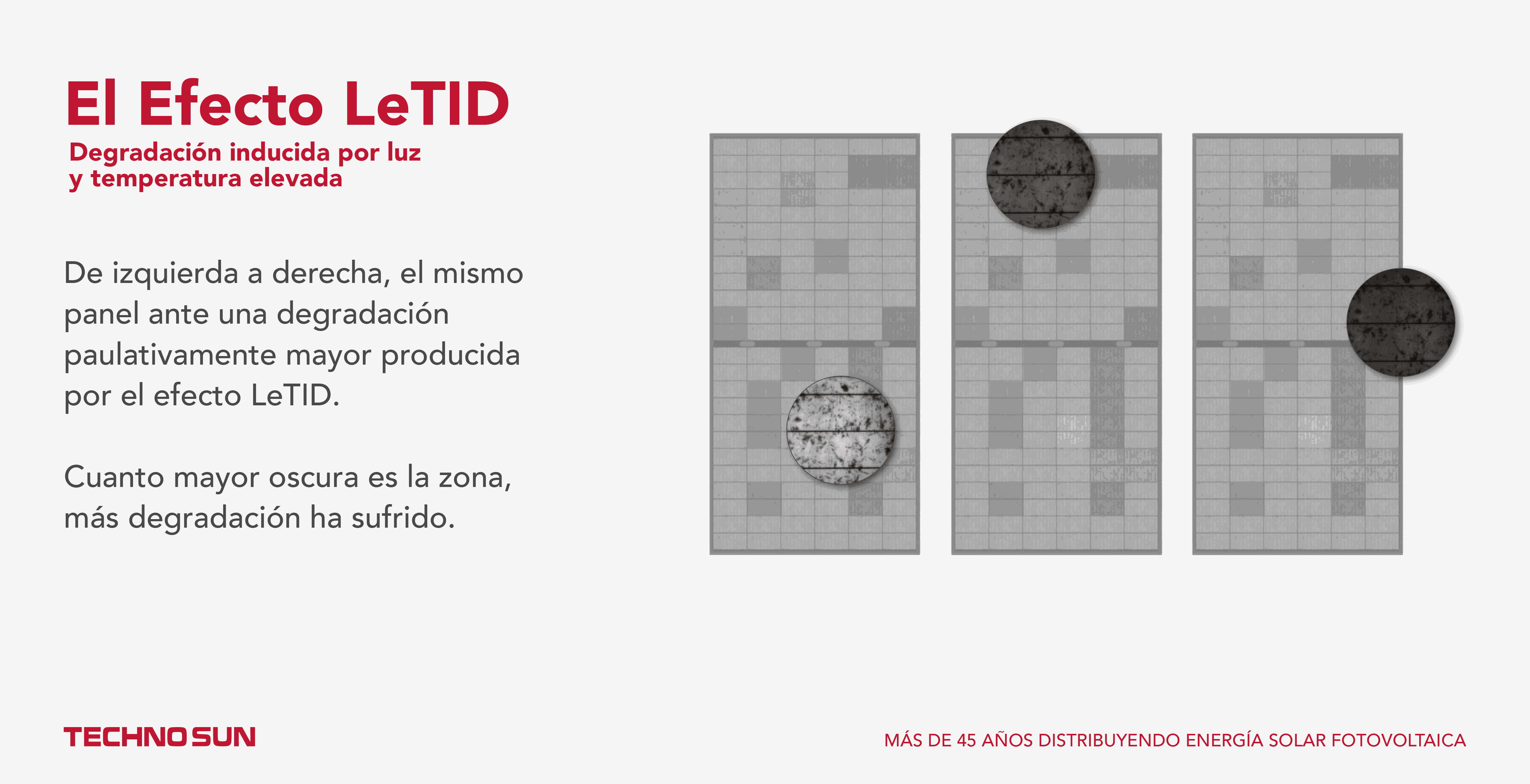What is the LeTID effect in photovoltaic modules?
The LeTID (high temperature and light induced degradation) or Carrier Induced Degradation (CID) effect of photovoltaic cells can have a major impact on the efficiency of solar modules. This effect was not discovered until 2012, when new types of PERC photovoltaic cells were introduced.
As photovoltaic cell technologies evolve and solar panels become more efficient, new problems are being discovered that were previously unknown or largely unaddressed. While manufacturers' efforts have focused on reducing adverse effects such as LID or PID, LeTID can result in more severe degradation over time, leading to large power loss over several years, eventually never recovering.
What are the consequences of the LeTID effect on photovoltaic modules?
The LeTID effect can cause power losses of more than 10% in the PV module, the losses of up to 20% have even been reported after two or three years of operation. But in addition, in contrast to the LID and DLID effect, recovery is much slower.
In the case of LID, stabilization occurs during the first few years, while in the case of LeTID, this recovery can be as long as the module's own useful life, which translates into a much higher total energy loss, with the consequences that this can have on an installation.

Which PV modules are affected by the LeTID effect and how to detect it?
LeTID affects both polycrystalline and monocrystalline PERC cells, although the latter are affected to a lesser extent. It has also been detected in gallium-doped modules, so it could be a universal defect affecting all types of solar panels.
In order to detect if a module has been affected by the LeTID effect we will have to use the same systems used to detect the LID effect, the electroluminescence. This technique requires special equipment, and there are companies specialized in this field to analyze solar panels.
With this equipment, an "X-ray" of the photovoltaic module is taken, which makes it possible to see the defects imperceptible to the naked eye and to observe the loss of power of the different cells. The darker an area is, the more the performance of a cell has decreased.
How to avoid the LeTID effect in photovoltaic modules?
Just as the precise reasons for the LeTID effect are still being investigated, so are the ways to avoid the LeTID effect. Apparently, the degree of LeTID decreases with wafer thickness, and therefore using thinner wafers could be one approach to reduce such an effect. Although working with thinner wafers could bring other performance and handling issues.
Other elements and processes that are studied to minimize or even eliminate LeTID are material selection, process adaptation and post cell manufacturing steps.
This is why, in summary, we are trying to implement the first measures in the PERC cell manufacturing process to reduce LeTID: low hydrogen materials, lower cell processing temperature and thinner wafers.
Efecto LeTID: Degradación inducida por luz y temperatura elevada